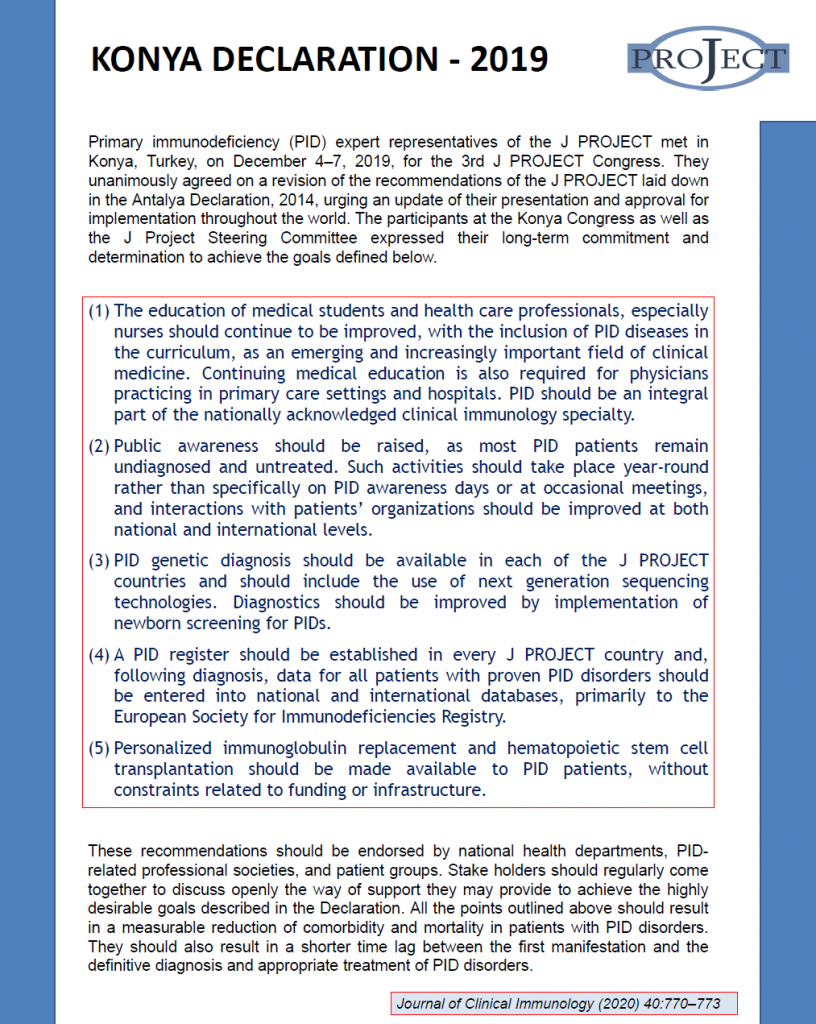Mission Statement
The last decade has seen an unprecedented increase in our knowledge of the clinical, immunological and genetic features of PIDs. The number of known PIDs now exceeds 450, and most of them are characterized at the genetic level. Much has been accomplished in Eastern and Central Europe (ECE), under the auspices of the J PROJECT program, which aims to increase awareness of PIDs and to improve medical training in this domain. However, much remains to be done if we are to achieve the goals outlined in 2004 (see J Project Booklet 2004). Thus, we call for prompt and effective action by national governments and health departments, to ensure the application of current knowledge to the diagnosis and treatment of PID patients, so as to improve the quality of life of these patients considerably. To this end, the following five objectives are targeted for attainment:
- EDUCATION of medical students and healthcare professionals should be improved, with the inclusion in the curriculum of PID diseases as an emerging and increasingly important field of clinical medicine. Continuing medical education is also required for physicians practicing in primary care settings and hospitals.
- PUBLIC AWARENESS should be raised to publicize the fact that most PID patients remain undiagnosed and untreated.
- PID GENETIC DIAGNOSTICS should be managed free of charge in each of the J PROJECT countries.
- A PID REGISTER should be established in every J PROJECT country and following diagnosis, data for all PID patients should be entered into national and international databases.
- PERSONALIZED IMMUNOGLOBULIN REPLACEMENT and HEMATOPOIETIC STEM CELL TRANSPLANTATION should be made available to PID patients, and should not be restricted by funding or infrastructure constraints.
To help to achieve these goals, PID research collaboration should receive preferential support from national funding agencies or bodies. These recommendations should be endorsed by national health departments, PID-related professional societies and patient groups. All the points outlined above should result in measurable reduction of co-morbidity and mortality of PID patients. They should also result in the lag between the first manifestation and definitive diagnosis of PID being less than one year for all patients.


